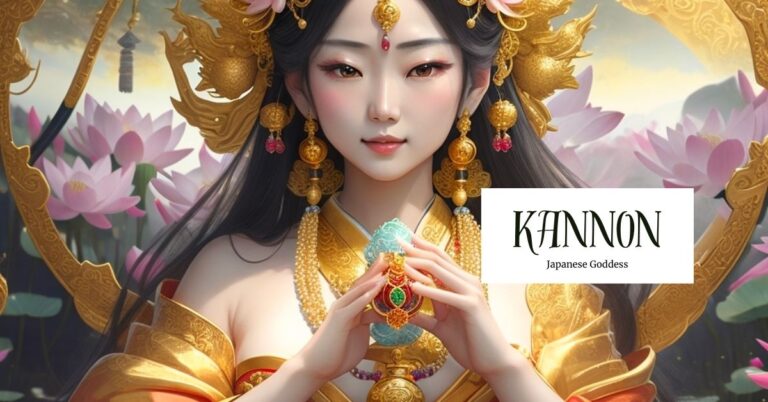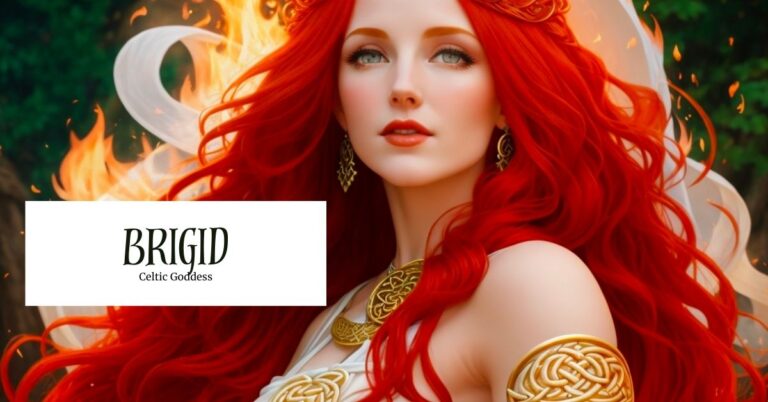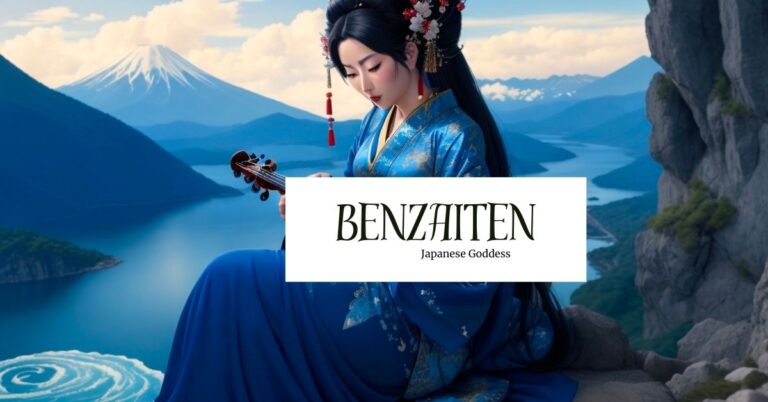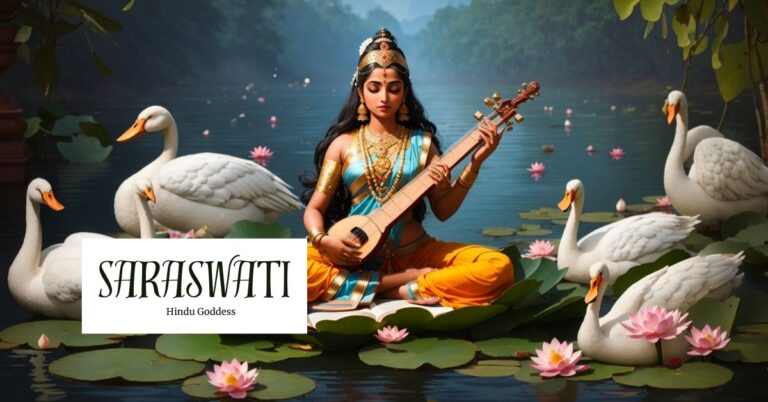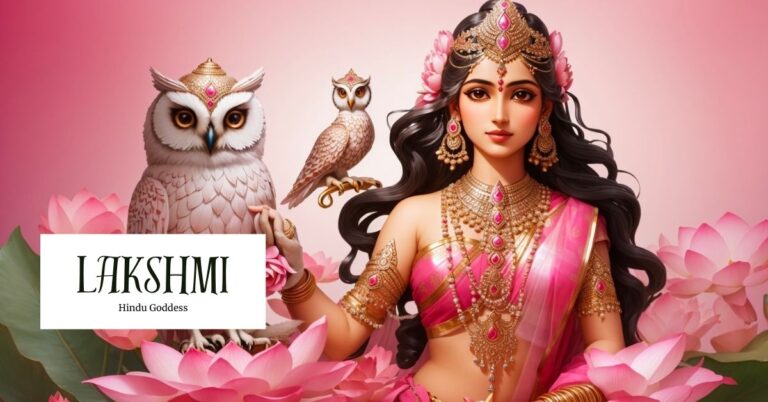Yemaja: The Goddess of the Seas
Yemaja, the patron of the society of mothers and pregnant women, is one of the main orisha, or deities, from the Yoruba religious tradition. Yoruba is related to Santería, an Afro-Caribbean religion, but the reaches of Yoruba and the orisha stretch far beyond the African continent.
The two main themes of Yemaja are her connection to the rivers and seas, which make up her ruling domain, and her association to pregnancies and mothers. Because she is the orisha for both rivers/seas and pregnancy, Yemaja is deeply affiliated with the creation of life. In fact, she has been compared to amniotic fluid, the liquid that keeps unborn infants alive in their mothers’ wombs, which is an intersection between her two domains of seas and pregnancies.
Overview

Source: Journey to the Goddess
Yemaja is also spelled Yemaya, Yemoja, Yemonja, or Yemanja depending on the region.
She is the ruler of the lively part of the oceans, or the shallower areas that are teeming with life and energy, as well as the Ogun River. She works closely with Olokun, the goddess of the deep sea who rules the deeper, more mysterious ocean waters. Yemaja is associated with many other orisha as well, with different stories portraying different figures (such as Obatala, Okere, Orisha Okok and Erinle) as her husband.
Her name means “Mother Whose Children are the Fish” and reflects her deeply maternal nature. Just as water is often believed to be the beginning of all life, so too is Yemaja. She is the patron of the Gelede Society, or the society of mothers and pregnant women. She is also associated with fertility, and some cultures believe she can cure infertility. An expression of her maternal nature is the many children—some she birthed and some she raised— she has within the many Yoruban legends, including Ogun, Sango, Oya, Oba, Orisha Oko, Babaluaiye, Osooi, Dada, and the Ibeji twins.
Yemaja is associated with other themes as well. In addition to the rivers/seas and mothers/pregnancies, Yemaja is connected with the ocean’s tides and, through the tides, the moon. Also, because of her revered position as one of the most senior and important orisha, Yemaja is believed to be very wise; many people seek out her guidance. Part of this guidance and wisdom is extended to human creativity, which is fitting as she is such a large part of creation.

Titles
- The Owner of the Seas
- Ocean Mother Goddess
Abilities
As the goddess of rivers and seas, Yemaja can exhibit control over water, including both large bodies of water and storm systems. She can even call upon and control hurricanes and Tsunamis.
As mentioned previously, many people believe Yemaja can cure infertility and bring children to women who wish to become mothers. She can also heal emotional wounds and cleanse energies, people, and spaces.
One of Yemaja’s other abilities is that of divination and reading of sacred scriptures. Though this process was originally banned from her as women, even female orisha, were not allowed to practice them. However, once Yemaja learned (stories suggest she spied upon her husband Orula to learn), her divination skills were so impressive that her husband accepted her ability and allowed her to practice. Some other stories say she stole the ability to read the sacred scriptures and to perform divinations and then taught the other Orisha.
Characteristics

Legends and depictions of Yemaja always present her as a woman of color, which reflects her origins in the Yoruban religion and her African descent. Her breasts can be elongated and low hanging, which represents her maternal role in raising and breastfeeding her many children. In fact, her long breasts are an insecurity of hers that others have poked fun at in various stories.
She is often seen wearing long dresses with flowing skirts in her symbolic colors of blue and white. Many details of her clothing and accessories are found in groups of seven—which is her symbolic number due to the seven seas—such as her necklaces alternating colors every seven beads or her skirts having seven layers of blue and white fabric. In times of war and bloodshed, Yemaja carries a machete into battle to protect her children.
Yemaja can also be depicted as a mermaid.
Traits
Yemaja is deeply maternal; just as she is protective and loving with her orisha children in the Yoruban stories, she is protective and loving over the humans she cares for as well. She is very soothing and nurturing, but much like the seas—which are temperamental—there is a duality to her. Though she is constant, she is also ever-changing; though she is gentle, she is also violent. When her temper flares, she intimidates and even menaces the recipients of her anger. Her soft side, however, can be presented with hobbies such as dancing.
Symbols
Yemaja’s symbolic animals include ducks, vultures, snakes, snails, fish, and peacocks. In fact, pieces of these animals, such as peacock feathers, fish scales, and seashells, are very important to her. Cowrie shells in particular are valuable to Yemaja both in legends and in human rituals. These items are often placed on shrines built in her honor. These shrines, called ota, are also decorated with sacred stones and bowls of river water, as well as other symbols of the sea such as nets and boat sculptures.
Other important symbols for Yemaja include the number seven, Saturday, the moon, and the colors blue and white.

Festivals and rituals
Rituals can help people reach Yemaja for guidance. Generally, individuals who want to pray to her will offer some symbolic items, such as those found on her ota, while lighting candles and meditating. During these meditation rituals, people can focus their energy into sending their thoughts and desires to Yemaja. One specific method is to make a ritual bath in order to perform the meditation. The use of items in groups of seven—such as seven candles or seven drops of fragrance—help deepen the connection with Yemaja.
Another ritual focuses more on offering up symbolic items. One way is to create a boat offering, which is typically used when women have issues with fertility or when individuals are asking for guidance, inspiration, or protection. To complete this ritual, you place items of significance to Yemaja on a boat, as well as your written requests, and recite a prayer. For example, as the goddess of the seas, Yemaja is invoked by fishermen to improve their luck and increase their catches.
People can also throw group celebrations for Yemaja that include dancing, sacrifices, and more. Children play games such as dunking for candy in the shape of fish, and whoever wins the game is said to earn more of Yemaja’s good luck.

Source: Inked Goddess Creations
Legends Associated with Yemaja
While there are some discrepancies among legends about Yemaja’s origin, the stories about how she ends and births the other orisha are agreed upon.
Origin story
There are two possible beginnings for Yemaja. In one, as one of the daughters of Olodumare or Olofi, (the names for the Yorban Creator of the Universe), Yemaja was sent to Earth with sixteen of her fellow orisha before the creation of humans. Once they arrived, the orisha prepped the world for humans. In the other, Yemaja is the daughter of a demi-god figure named Obatala and his wife. She and her sibling, Aganyu, later had a son together.
Another important aspect of Yemaja’s story is that she was once a river goddess; however, as her believers were sold into slavery, she decided to follow and protect them in their travels across the ocean. Through this action, she became the goddess of the oceans and seas in addition to the rivers.
Yemaja’s death and the creation of life
While details of Yemaja’s origin story are less known, her death tale is a notoriously sad one. Her son, in an act intended to rebel against his father, raped his mother. Afterward, Yemaja hid atop a tall mountain and cursed her son for his violent actions and betrayal. Consumed with pain and sadness, Yemaja jumped off of the mountain and took her own life.
In her death, Yemaja became the Mother of All by giving birth to 14 orisha. When her water broke for these births, the liquid that flowed from her body created the seven seas. Some versions of the legend even say humans were also born from her body, truly making her the Mother of All.
Yemaja and Olokun
Once, when Yemaja’s fellow orisha Olokun felt undervalued by the humans, Olokun created massive Tsunami-like waves to punish them for their disrespect. The humans feared for their lives and their land.
Yemaja, the nurturing Mother of All, convinced Olokun to stop sending the waves and to calm down. Once Olokun calmed, the water returned to the oceans. Beautiful shells, pearls, and pieces of coral remained on the land, and Yemaja saved the humans from Olokun’s wrath.
Yemaja and the seashell
According to legend, Yemaja gave humanity a seashell in which people could always hear her voice; to this day, people still hear the sound of the ocean and of Yemaja when they hold a seashell to their ear.
Yemaja as the Mother Goddess
The myth of the Great Goddess supports the idea that a goddess of fertility was worshiped as far back as the Neolithic era. In different and more recent religions and regions, such as those of Mesomerica, Greece, and Rome, another goddess appears to be the start of the religions and the birth giver of other deities.
For example, in Ancient Greek mythology, one of the Great Goddess figures is Rhea, a Titan goddess who birthed several of the Olympian Gods/Goddesses that are the foundation for Ancient Greek mythology. Yemaja fits this Great Goddess theory as well and shares many similarities to Rhea as she too is a “mother” of most of the other orisha.

Influences of Other Religions and Cultures
Some of the different spellings of Yemaja are associated with different cultures’ versions of her. For example, to the Brazilian Candomblé faith, which has roots in Yoruba, Yemaja is known as Yemanja/Imanje, and she is the Sea Mother who helps fishermen prosper. Another group in Brazil calls her Yemanja Afodo, and she protects boats in their travels. To groups in Haiti, Yemaja is a moon goddess who protects mothers and children.
When believers of the Yoruban tradition were taken as slaves, their religious beliefs were banned, and they were forced to convert to Catholicism. To practice their faith in secret, believers syncretized their deities with prominent figures in Christianity. Therefore, Yemaja is not just compared to the Virgin Mary; she was syncretized with her. Both are prominent maternal figures who gave birth to very important religious beings in their separate belief systems.
Modern appearances
Many cultures and regions still celebrate and revere both Yemaja and the other orisha deities. In addition to parts of Africa, places such as Brazil, Cuba, America, and other parts of the Caribbean still have strong Yoruban followings. For example, the Candomblé faith has celebrated Yemaja as Yemanja on New Years Eve for almost 100 years. Other areas still build ota for her.
Final Thoughts
Yemaja is a strong, powerful, nurturing, and fierce female figure that presents the duality that can be found in all of humanity, particularly within women. She reigns over the rivers and seas that are filled with life and energy, making her and Olokun two sides of the same coin. She also is the patron of mothers, pregnances, fishermen, and any lost soul seeking love and protection. As she is credited with the birth and creation of many of the other orisha in the Yoruban faith, Yemaja is a great and respected deity that is sought out by humans for her wisdom and creativity. She is still widely renowned in contemporary times as people continue to look to her for inspiration as they move throughout their lives.


